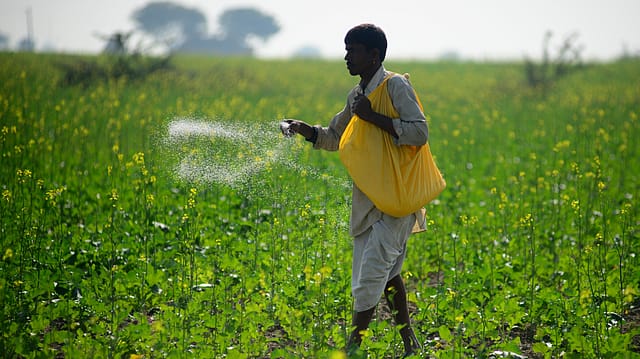Govt's fertiliser subsidy bill to jump by ₹40,000 cr: Crisil
ADVERTISEMENT

The government's fertiliser subsidy bill could increase by around ₹40,000 crore this fiscal from the already-announced allocation of ₹2.15 lakh crore because of continued surge in the prices of pooled natural gas, the key raw material for manufacturing urea, according to Crisil.
Any delay in increased allocation and disbursement would lead to higher working capital requirement and moderate the credit metrics of fertiliser makers, the ratings agency warns.
The government has been proactive in addressing the subsidy requirements of the industry. In addition to ₹1.05 lakh crore approved in the Union Budget for this fiscal, an additional subsidy of ₹1.10 lakh crore was announced in May 2022 to offset surging feedstock and product prices.
While this seemed sufficient to meet this fiscal's requirements, continued surge in the price of gas has necessitated further subsidy, says Crisil.
This comes weeks after Finance Minister Nirmala Sitharaman said both energy and fertiliser prices as well as their availability are the major challenges to the Indian economy in the near term.
The retail selling price of urea is fixed by the government. It is kept as low as 85% below the market prices to encourage farmers to use fertilisers for better crop yield. Urea makers are compensated through subsidy payments.
December 2025
The annual Fortune 500 India list, the definitive compendium of corporate performance, is out. This year, the cumulative revenue of the Fortune 500 India companies has breached $2 trillion for the first time. Plus, find out which are the Best B-schools in India.
Amid the Russia-Ukraine conflict, the price of pooled gas has risen around 10% quarter-on-quarter in September 2022.
"Each dollar's increase in the price of pooled gas raises the government's subsidy burden by ₹7,000 crore on domestically produced urea, which accounts for 85% of the production volume," says Naveen Vaidyanathan, director, Crisil Ratings.
The price of imported urea, which accounts for the balance 15% volume, remains elevated at over around $650 per MT metric tonne, almost double the historical levels, says Vaidyanathan, adding this could mean overall subsidies rising to ₹2.55 lakh crore this fiscal.
Notably, this estimate has not factored any revision in the nutrient-based subsidy (NBS) rates for the second half of this fiscal, which comprises the rabi season. For non-urea fertiliser makers, the government pays subsidy as per the NBS rates, which are reviewed in April and October every year.
While prices of phosphoric acid and rock phosphate, key ingredients for non-urea fertilisers, have risen 12% and 37%, respectively, in the six months through September 2022, NBS rates were hiked steeply in the first half of this fiscal.
"With the uptrend in input prices, the current budget allocated could get exhausted in the next 1-2 months. The sector is already seeing a build-up in receivables and therefore, higher working capital debt. Subsidy receivables have more than doubled in August 2022 from around Rs 14,000 crore in March 2022, indicates an analysis of the CRISIL-rated manufacturers. Hence, increased government allocation and timely disbursement are crucial," says Joanne Gonsalves, team leader, Crisil Ratings.
